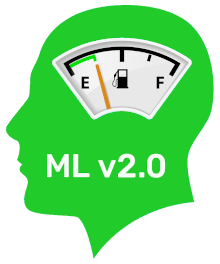Now that we have explored the mechanics of both the More-ish and Less-ish Mind types it’s time to dive deeper into the process of Lessing. This page will uncover the two types of Lessing- Traditional and Ultimate, showing the similarities and differences, along with the rewards and pitfalls associated with each.
What Is Traditional Lessing?
Traditional Lessing involves mindfulness and general meditation techniques to help change a state of mind. These methods redirect attention away from mental noise, providing temporary relief. In other words, Traditional Lessing uses various methods to create a short-term space where one can exist comfortably.
Some examples of this are “Think of all the positive things in your life” and “Focus on your breathing to slow down your mind.” Within these methods, attention is taken away from the troubles by an act of manufacturing a thought-created space through a deflection in unreality. Simply put, the good thoughts overwhelm the bad ones.
However, when the pressure is more intense, I bypass the mind and jump straight into managing physiological functions to create more space; i.e., I practice deep breathing techniques, such as the physiological sigh (see Short), in order to reduce blood flow and ultimately stress from the outside in. Essentially, this is reverse engineering peace of mind by using the physical side to condition the mental side, rather than the usual methods which approach things the other way around. Just as a serene mind creates physical serenity, so too, physical serenity can help eliminate mental anxiety.
Following on, I add positive suggestions and imagery to further relieve the negative or heavier pressure, which ultimately causes a shift in my state of mind while any outstanding problems go dormant for a short while. What more can I say? This process gives me instant relief as it attacks the problem from both ends at once.
What more can I say? This process gives me instant relief.
From ‘winding-down’ using subtle forces, to ‘escapism’ using excess social media, booze and drugs (moving into blatant escapism), I apply the appropriate sweeping force that’s needed to clear my mind of the noise right now. This is the nature of Traditional Lessing.
What Is Ultimate Lessing?
Ultimate Lessing or ‘Being Mindless’ (in a new, light-hearted sense), is to simply observe deeper and see all programs INTERCHANGE from a positive to a negative, then back to a positive again as the relentless cycle begins to unfold. In turn, this allows a natural shaping to take place gradually. Thus, rather than adding more thought to control pressure, I reduce the overall processing of my thoughts. In a way, it’s the difference between removing my mind from the pressure, as opposed to removing the pressure from my mind. Using this method means I won’t be so up and down over a long term investment of positive input to balance the books.
Needless to say, this ‘cleaning up’ can only occur once I acknowledge my typical noisy mind and its interchanging, otherwise all this jargon will make little sense. In which case, the word ‘Mindless’ would continue representing inferior qualities if this condition is not met. Hence, let’s keep it at Mindless 2.0.
‘Lessing’ in this new context stems from a deeper mental world and isn’t a conscious demand. It naturally arises from observing with a wider, deeper perspective.
What Is the Potential Negative Consequence of Traditional Lessing?
Typically, a General Mind will be able to manage its ‘Lessing Lifestyle’ more efficiently than its counterpart. Otherwise, it’s an OVERLOAD of extremes that can be all-consuming for a Highly Sensitive Mind. An overload of ‘good’ will trigger a reactionary dose of ‘bad’, and so the cycle would start its grip again. This is the law of the Psychological Universe, which is designed to maintain balance.
You see, when things get busy busy busy upstairs, regardless of good or bad sensations, this can act as a hypnotic weight for a Highly Sensitive Mind (time for the fairies…). Which means, there is a greater chance of complacency toward the outer world, creating even more problems to follow.

Highly Sensitive People are people who absorb either ‘more’ or an ‘extended range’ of stimuli than others on life’s spectrometer, which creates another reality for them with even the slightest turn of the knob. Typically perceived in society as outcasts, they can also be very clever in their misfitting ways. HS folk go by many labels ranging from eccentric to ADHD to Asperger’s, thru to Bi-polar and Schizophrenia. It’s a tough maze to find the exit from, but it can be done.
✋🏽 Now listen up, Highly Sensitive Person. If I urge you to never give up trying to get out of your predicament, you will likely keep going around in circles trying. Take my word on it. I’ve been there many times. It’s best you give up a good portion of ‘trying to get your act together’, and use this energy to watch yourself closely instead.
Therefore, in regards to our Traditional Programs, they often suit the General Mindset but are not for everyone as hoped. For others, we run better on an emptier mind…
Never Mind! No mind! Less mind. Etc.
Get the drift?
Now say thank you and goodbye to the traditional-only aspect, and welcome and hello to Mindless 2.0.

